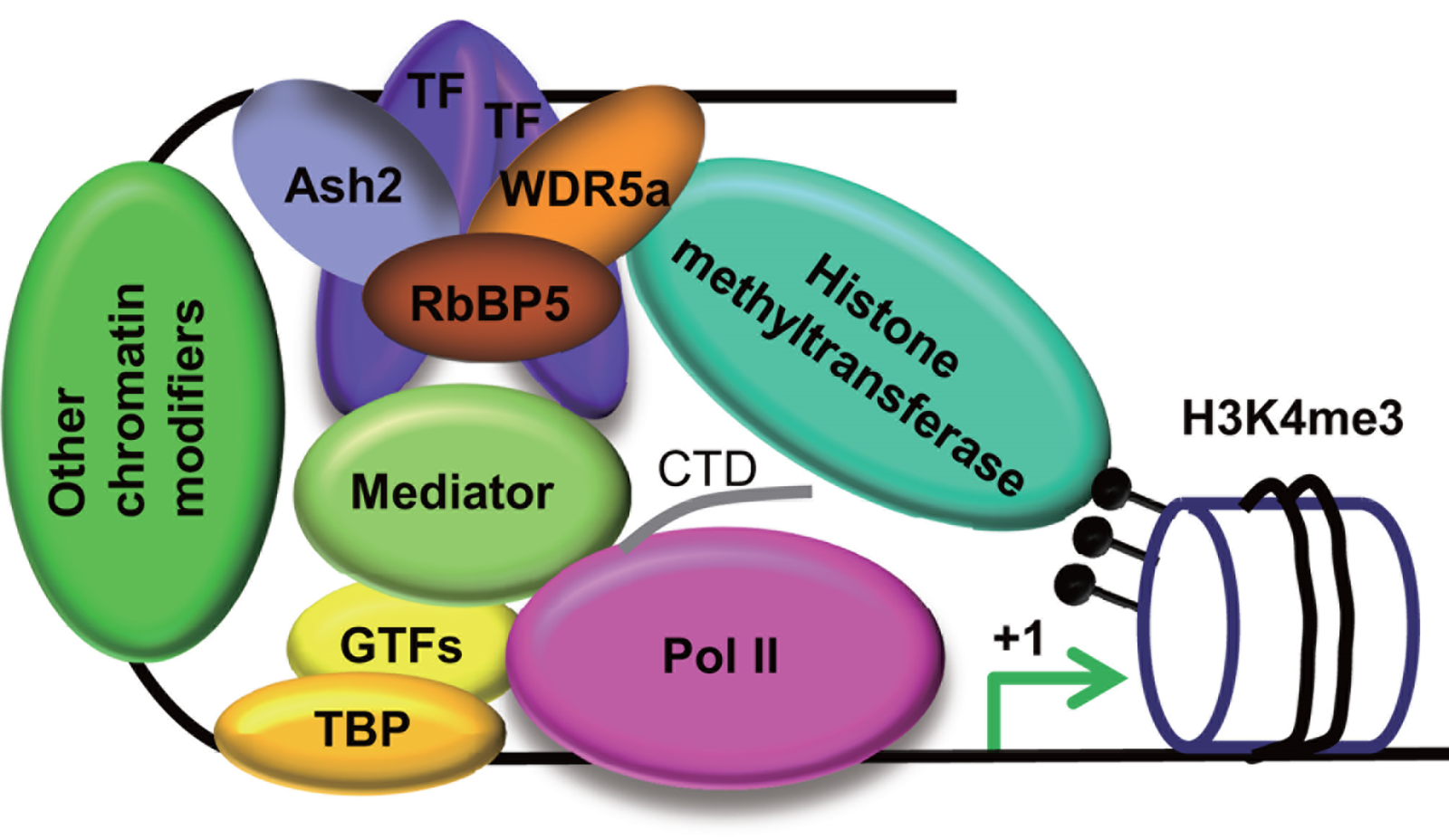Transcription factor interaction with COMPASS-like complex regulates histone H3K4 trimethylation

Accumulation of unfolded or misfolded proteins causes endoplasmic reticulum (ER) stress, which activates a set of ER membrane-associated transcription factors for protein homeostasis regulation. Previous genome-wide chromatin immunoprecipitation analysis shows a strong correlation between histone H3K4 trimethylation (H3K4me3) and active gene expression. However, how the histone modification complex is specifically and timely recruited to the active promoters remains unknown. Using ER stress responsive gene expression as a model system, we demonstrate that sequence-specific transcription factors interact with COMPASS-like components and affect H3K4me3 formation at specific target sites in Arabidopsis. Gene profiling analysis reveals that membrane-associated basic leucine zipper (bZIP) transcription factors bZIP28 and bZIP60 regulate most of the ER stress responsive genes. Loss-of-functions of bZIP28 and bZIP60 impair the occupancy of H3K4me3 on promoter regions of ER stress responsive genes. Further, in vitro pull-down assays and in vivo bimolecular fluorescence complementation (BiFC) experiments show that bZIP28 and bZIP60 interact with Ash2 and WDR5a, both of which are core COMPASS-like components. Knockdown expression of either Ash2 or WDR5a decreased the expression of several ER stress responsive genes. The COMPASS-like complex is known to interact with histone methyltransferase to facilitate preinitiation complex (PIC) assembly and generate H3K4me3 during transcription elongation. Thus, our data shows that the ER stress stimulus causes the formation of PIC and deposition of H3K4me3 mark at specific promoters through the interaction between transcription factor and COMPASS-like components.
《美国科学院院报》刊发刘建祥课题组最新科研成果
2015年2月17日,《美国科学院院报》(Proc. Natl. Acad. Sci. USA.)以直接投送(Direct submission)的方式,发表了复旦大学生命科学学院刘建祥课题组的研究论文“Transcription factor interaction with COMPASS-like complex regulates histone H3K4 trimethylation for specific gene expression in plants”,首次揭示转录因子参与表观遗传修饰调控下游基因表达的分子机理。
在真核细胞的细胞核中,遗传信息的载体脱氧核糖核酸(DNA)缠绕在组蛋白八聚体上形成核小体结构,进一步包装成染色质。在这种紧密包装的状态下,基因无法表达,遗传信息很难被读取。染色质重塑和组蛋白修饰能影响染色质状态,调控基因的表达。有报道指出全基因组水平上基因启动子附近组蛋白H3第4位赖氨酸三甲基化(H3K4me3)修饰与基因表达有很强的正相关,但基因启动子上的组蛋白H3K4me3修饰是如何特异和及时发生的分子机理并不是很清楚。复旦大学刘建祥课题组与中国科技大学丁勇课题组合作,发现并证明了在植物转录起始复合物(PIC)的装配过程中,基因特异转录因子(bZIP28或bZIP60)与类罗盘(COMPASS-like)复合物成员(Ash2或WDR5a)相互作用,影响目标基因启动子附近组蛋白H3K4me3水平,调控植物内质网胁迫应答下游基因的表达。内质网胁迫应答由内质网中错误折叠蛋白积累所引起,与多种人类疾病和植物适应极端环境变化密切有关。
遗传工程国家重点实验室、遗传与发育协同创新中心的刘建祥研究员为该论文通讯作者,博士研究生宋泽婷(复旦大学)为该论文第一作者。该研究得到了国家科技部和国家自然科学基金委等项目的资助。
刘建祥课题组长期从事植物内质网蛋白折叠调控的研究,近年取得了一系列研究成果,相关成果发表在PNAS、Plant Cell、PLOS Genetics等国际学术期刊。
